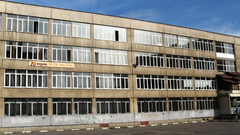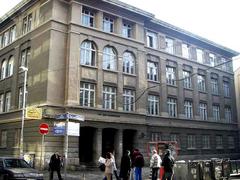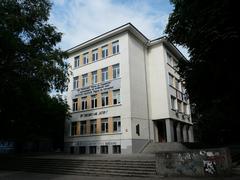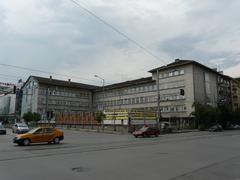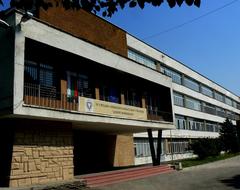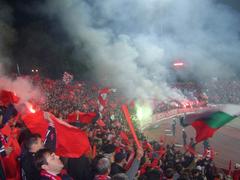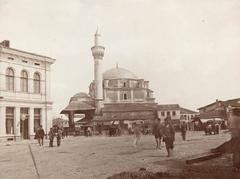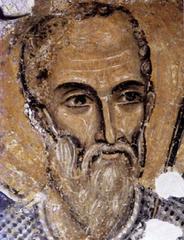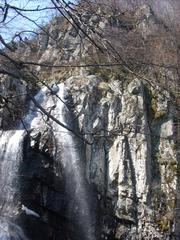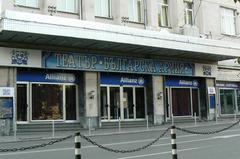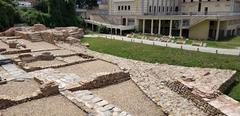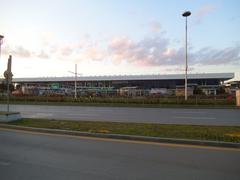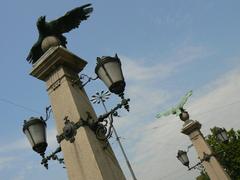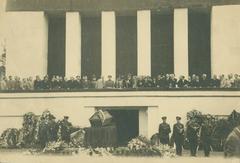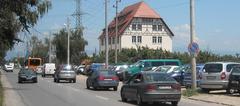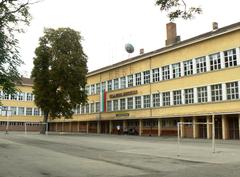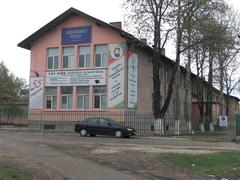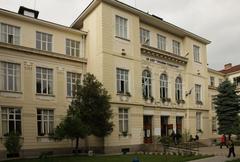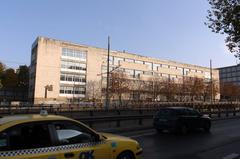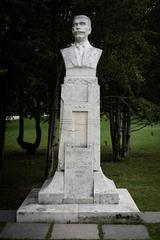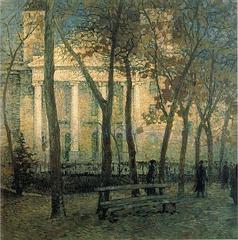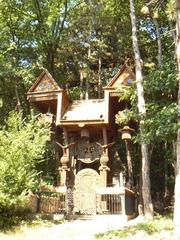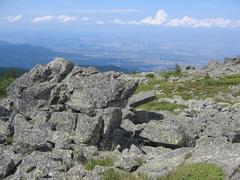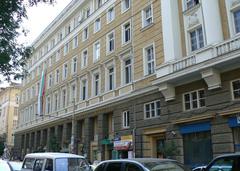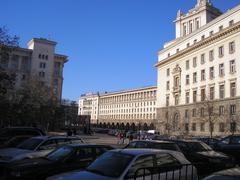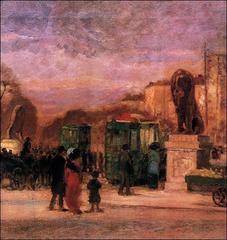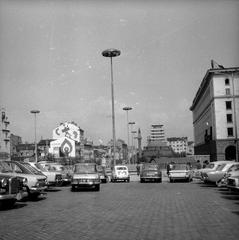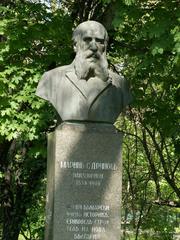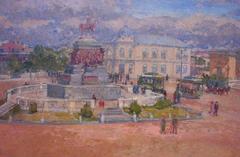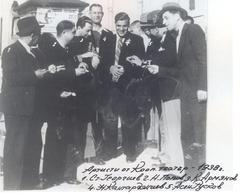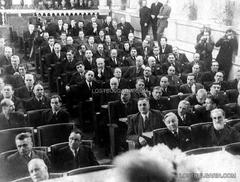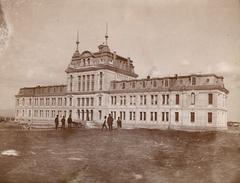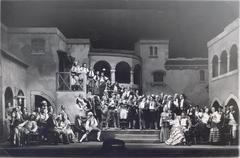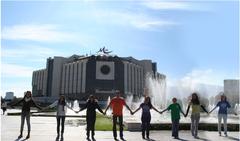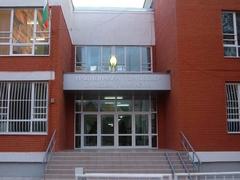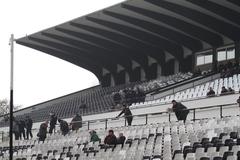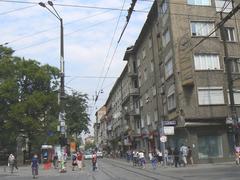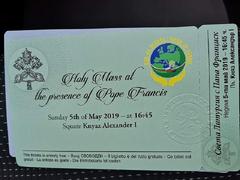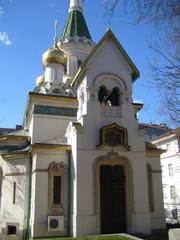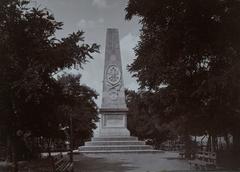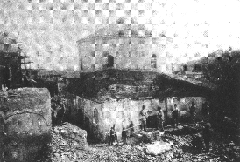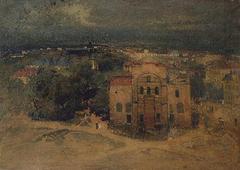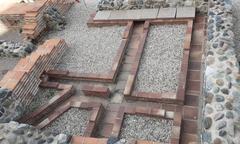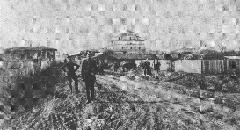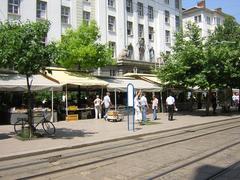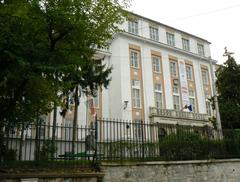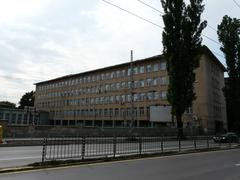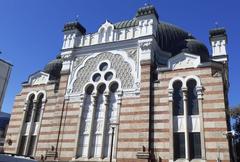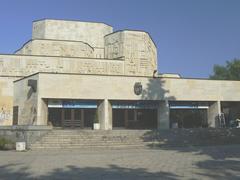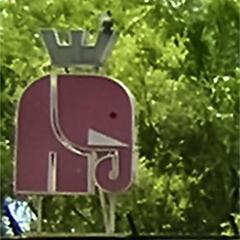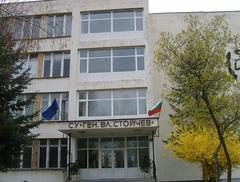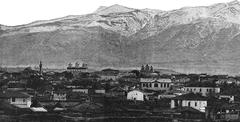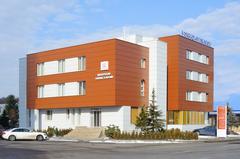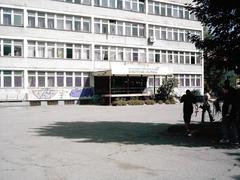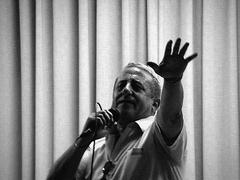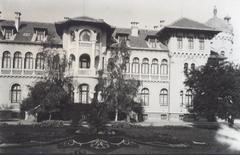National Polytechnical Museum Sofia: Visiting Hours, Tickets, and Historical Sites Guide
Date: 04/07/2025
Introduction
The National Polytechnical Museum in Sofia stands as a vibrant testament to Bulgaria’s scientific and technological heritage. Established in 1957 and recognized as a national museum in 1968, it offers an immersive journey through Bulgaria’s innovations, industrial milestones, and scientific achievements from the 19th century to the digital era. With over 22,000 artifacts—ranging from rare timekeeping devices and vintage automobiles to early computers and photographic equipment—the museum appeals to historians, technology enthusiasts, families, and tourists alike.
Conveniently located at 66 Opalchenska Street, the museum is accessible by public transport, with tram and bus stops nearby. Facilities are available for visitors with disabilities. Whether you’re planning a cultural itinerary involving landmarks like the Alexander Nevsky Cathedral or seeking an educational outing, the museum promises a comprehensive and memorable experience.
This guide consolidates essential information on visiting hours, ticketing, accessibility, collections, and visitor tips. For the most current details and virtual exploration options, visit the official websites (National Polytechnical Museum Official Website, museums.eu).
Table of Contents
- Introduction
- Practical Visitor Information
- Historical Overview and National Significance
- Collections and Archives
- Time-Measurement Instruments
- Transport Technology
- Photo and Cinema Technology
- Optics and Scientific Instruments
- Sound and Audio Technology
- Radio and Television
- Calculation and Computing Technology
- Musical Mechanisms
- Household and Everyday Technology
- Physical and Measurement Appliances
- Communication Technology
- Scientific Archives and Library
- Educational Programs and Public Engagement
- Visitor Experience
- Nearby Attractions and Suggested Itinerary
- Facilities and Accessibility
- Practical Tips for Visitors
- Family-Friendliness and Educational Value
- Seasonal Considerations
- FAQs
- Plan Your Visit and Stay Connected
Practical Visitor Information
Opening Hours
- Tuesday–Sunday: 9:00 AM – 5:00 PM
- Closed: Mondays and public holidays
Admission is free on the last Monday of each month. Hours may vary during special events; check the official website before visiting.
Ticket Prices
- General Admission: 5–6 BGN (approx. 2.50–3 EUR)
- Students, Seniors, Groups: 2–3 BGN
- Children under 7: Free
- ICOM Members: Free
Tickets can be purchased onsite or online via the official museum website.
Accessibility
The museum is committed to accessibility, offering ramps, elevators, and adapted restrooms. For visitors with disabilities, advance notification is recommended to ensure full support. Stroller access and family rest areas are also available.
Location and Getting There
- Address: 66 Opalchenska Street, Sofia
- Public Transport: Accessible via tram lines 6, 7, and 12 (Opalchenska stop), as well as several bus routes
- Parking: Limited paid parking zones nearby
- Taxis: Recommended to use reputable services or ride-hailing apps
Guided Tours & Special Events
Guided tours are available in Bulgarian, English, and Spanish. Booking in advance is recommended, especially for groups. The museum also hosts special exhibitions, workshops, lectures, and family-friendly events throughout the year.
Historical Overview and National Significance
Founded on May 13, 1957, the National Polytechnical Museum was initially managed by the Bulgarian Academy of Sciences before being transferred to the Ministry of Education and Culture. Since 1968, it has been recognized as a national museum. The first director, Eng. Alexander Valchev, played a key role in shaping its collections.
As one of Bulgaria’s “100 National Tourist Sites,” the museum attracts approximately 30,000 visitors annually and serves as the headquarters of the Bulgarian National Committee of the International Council of Museums (ICOM). Its central mission is to preserve and showcase the nation’s technological progress and to foster public engagement with science and technology.
Collections and Archives
The museum’s permanent exhibition spans over 1,000 square meters and features about 1,000 objects at any time, with a total collection exceeding 22,000 artifacts. The collections are organized thematically:
Time-Measurement Instruments
A diverse array of clocks and watches, from ornate 18th- and 19th-century mechanical timepieces to early 20th-century electric clocks, including rare Bulgarian-made examples.
Transport Technology
Restored automobiles (such as a 1920s Ford Model T and a 1952 Messerschmitt microcar), motorcycles, bicycles, and early motor vehicles, showcasing Bulgaria’s engagement with global mobility trends.
Photo and Cinema Technology
Early box and plate cameras, film projectors, vintage movie cameras, editing tables, and sound-recording devices that chart the evolution of visual media.
Optics and Scientific Instruments
Microscopes, telescopes (including Dr. Peter Beron’s), and surveying equipment dating back to the 19th century, reflecting Bulgaria’s contributions to scientific progress.
Sound and Audio Technology
Phonographs, gramophones, radios, tape recorders, and other devices chronicling the development of sound technology.
Radio and Television
Radio receivers, transmitters, and television sets illustrate the rise of electronic media and Bulgaria’s social and technological transformations.
Calculation and Computing Technology
Mechanical calculators, slide rules, early electronic calculators, and historic Bulgarian computers, capturing the digital revolution.
Musical Mechanisms
Music boxes, player pianos, and mechanical organs—many in working condition—demonstrate the evolution of automated music devices.
Household and Everyday Technology
Historic sewing machines, typewriters, kitchen appliances, early vacuum cleaners, and other domestic artifacts highlight the transformation of everyday life.
Physical and Measurement Appliances
Laboratory equipment and industrial gauges illustrate the tools of scientific research and industrial quality control.
Communication Technology
Artifacts from postal, telegraph, and telephone history, including early telephones, switchboards, and telegraph machines.
Scientific Archives and Library
The museum houses over 2,000 archival units and a specialized library with more than 12,000 books and periodicals, as well as art and cartographic collections.
Notable Thematic Exhibitions
- “The Beginning – 120 Years of Bulgarian Communications”
- “The Radio in Bulgaria”
- “Let’s Record and Hear the Sounds”
- “History of Training in Astronomy”
Educational Programs and Public Engagement
The museum offers interactive workshops, school programs, and public demonstrations. Examples include the “Fun Science” series for children aged 9 to 13, and participation in the European Night of Museums. The events calendar is updated regularly on the official website.
Visitor Experience
Exhibits and Interactivity
The museum provides interactive displays, hands-on exhibits, and multimedia presentations. Special zones are designed for children and families, promoting hands-on learning.
Language and Information
Most exhibit labels are in Bulgarian, with partial English translations. Visitors are encouraged to familiarize themselves with the Cyrillic alphabet for easier navigation (Sofia Adventures). Guided tours in English or Spanish are recommended for non-Bulgarian speakers.
Photography Policy
Photography is generally permitted without flash. Tripods are not allowed, and some areas may have restrictions—always check posted signs or consult staff.
Nearby Attractions and Suggested Itinerary
Combine your museum visit with other Sofia historical sites such as:
- Alexander Nevsky Cathedral
- National Archaeological Museum
- National Palace of Culture
- Earth and Man National Museum
- Ivan Vazov National Theatre
- Vitosha Boulevard for shopping and dining
The central location makes it ideal for a half-day cultural itinerary.
Facilities and Accessibility
- Wheelchair access and adapted restrooms
- Stroller access and family rest areas
- Gift shop with science-themed souvenirs
- No café onsite, but many restaurants and cafés nearby
- Limited free WiFi; consider a local SIM for connectivity
Practical Tips for Visitors
- Best Times to Visit: Weekday mornings for a quieter experience
- Recommended Duration: 1.5–2 hours (longer for enthusiasts)
- Currency: Bring Bulgarian leva in small denominations; most payments are cash-based
- Safety: The area is safe and well-lit. Bring a reusable water bottle; pharmacies are nearby in case of emergencies.
Family-Friendliness and Educational Value
The museum is ideal for families and school groups, featuring interactive zones and workshops throughout the year. Its educational value appeals to both children and adults interested in science, innovation, and history.
Seasonal Considerations
Sofia experiences hot summers and cold winters. The museum is a great indoor activity year-round. For outdoor excursions, consider Vitosha Mountain or nearby parks (Sofia Adventures).
FAQs
Q: What are the museum’s opening hours?
A: Tuesday to Sunday, 9:00 AM – 5:00 PM; closed Mondays and public holidays.
Q: How much are tickets?
A: General admission is 5–6 BGN; discounts available for students, seniors, and children; under 7s enter free.
Q: Is the museum wheelchair accessible?
A: Yes, ramps and adapted restrooms are provided.
Q: Are guided tours available in English?
A: Yes, pre-booking is recommended.
Q: Is photography allowed?
A: Yes, except in designated areas and without flash.
Q: Can I park nearby?
A: Paid parking is available in the vicinity.
Plan Your Visit and Stay Connected
To make the most of your visit:
- Check the official museum website for current hours, ticketing, and event updates.
- Book guided tours in advance for a richer experience.
- Download the Audiala app for audio guides and interactive maps.
- Follow the museum and our blog on social media for the latest news.
References and Official Links
- National Polytechnical Museum Official Website
- Museums.eu Listing
- Polymuseum.bg
- Sofia Adventures Travel Tips
- Wanderlog Museum Listing
The National Polytechnical Museum bridges Bulgaria’s past, present, and future through science and technology. Explore its halls to witness the nation’s remarkable journey of innovation and be inspired to learn more about the world around you.
